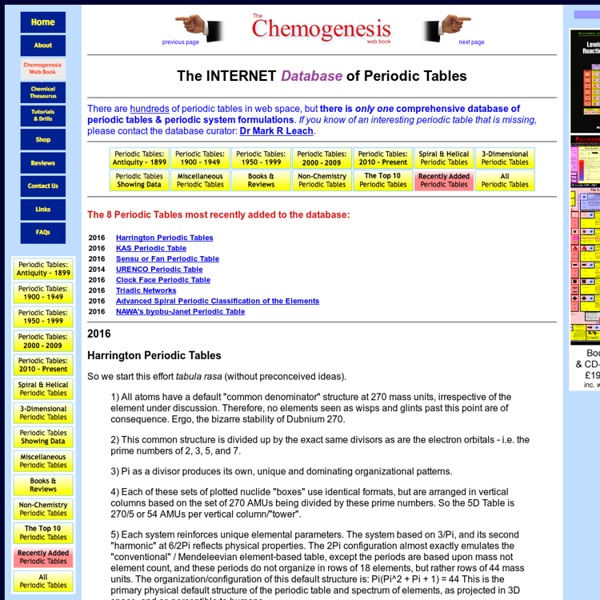Chemistry | 5.112 Principles of Chemical Science, Fall 2005 | Video Lectures | Lecture 26: Molecular Orbital Theory
Spray-on liquid glass is about to revolutionize almost everything
(PhysOrg.com) -- Spray-on liquid glass is transparent, non-toxic, and can protect virtually any surface against almost any damage from hazards such as water, UV radiation, dirt, heat, and bacterial infections. The coating is also flexible and breathable, which makes it suitable for use on an enormous array of products. The liquid glass spray (technically termed “SiO2 ultra-thin layering”) consists of almost pure silicon dioxide (silica, the normal compound in glass) extracted from quartz sand. Liquid glass was invented in Turkey and the patent is held by Nanopool, a family-owned German company. The liquid glass spray produces a water-resistant coating only around 100 nanometers (15-30 molecules) thick. Food processing companies in Germany have already carried out trials of the spray, and found sterile surfaces that usually needed to be cleaned with strong bleach to keep them sterile needed only a hot water rinse if they were coated with liquid glass.
17 Science Experiments That Will Make Childhood Unforgettable
We care for our children every day. But in 20 years it won't be the everyday tasks we performed for them that they'll remember. Instead, it will be the moments we spent together. Bright Side put together a selection of the 16 best science experiments that will both tear you away from your concerns and fascinate your children. Hard liquid You will need: Starch Water A plastic container Food coloring, a wooden board, a hammer, and some nails for additional experimentation Mix the water and the starch together in the container until the mixture turns viscous in its consistency. Homemade kinetic sand 4 teaspoons of boric acid 2 teaspoons of ordinary paper glue 1 teaspoon of coloring 100 g of chinchilla bathing sand A glass bowl Pour all the liquid components into a bowl, add the sand, and thoroughly mix them together. Glowing water 2-3 highlighters Pliers A measuring cup Tweezers A UV Light Pour water into a few glasses (2-3 in number), filling them about 2/3 of the way. Making a Pharaoh snake
AP Chemistry Review Activities
AP Chemistry Interactive Review Activities In keeping with the new framework for AP Chemistry beginning in 2013 - 2014, I am indicating here if the topic to which a review activity relates has been dropped from the curriculum. It will be identified as excluded (Excluded) to indicate that the College Board has specifically excluded it. I will leave the reviews here, however, in case some of you find them useful. These are not graded assignments. They are intended only as practice of concepts and vocabulary that are essential to your success in this course. Each time you reload the activity, the problems will be in a different order, and the answers will be reshuffled!
Infinite Power Solutions - The global leader in thin-film micro-energy storage devices
Chemicum - 100+ Experiments in Chemistry II
Periodic Table of Elements and Chemistry
Solar Panels Built Into Roads Could Be the Future of Energy
The Department of Energy just gave $100,000 to upstart company Solar Roadways, to develop 12-by-12-foot solar panels, dubbed "Solar Roads," that can be embedded into roads, pumping power into the grid. The panels may also feature LED road warnings and built-in heating elements that could prevent roads from freezing. Each Solar Road panel can develop around 7.6 kwh of power each day, and each costs around $7,000. If widely adopted, they could realistically wean the US off fossil fuels: a mile-long stretch of four-lane highway could take 500 homes off the grid. If the entire US Interstate system made use of the panels, energy would no longer be a concern for the country. In addition, every Solar Road panel has its own microprocessor and energy management system, so if one gives out, the rest are not borked. Still, this is a ways away from actual implementation, seeing as a prototype has yet to be built. [via Solar Roadways via Inhabitat]
Periodic Table Battleship
I have posted a lot about Chemistry lately. My oldest has been studying it and really enjoying it. I love his science-y mind! This game can be played even by kids who know nothing about the Periodic Table Yet. To make the game, print out 4 copies of the Periodic Table. The kids can then mark where they want to place their ships by circling rows of 2, 3, 4, and 5 elements on the lower table.. ** I used coordinates because my 8-year-old was scared of trying to read all of the elements, but after they got going they were just calling out elements names instead of the letters and numbers. By reader request, we made a video of how to play! Also, Buy a physical copy of the game! Like this post? I also made some Chemical Compound Flash Cards you can purchase in my shop.



